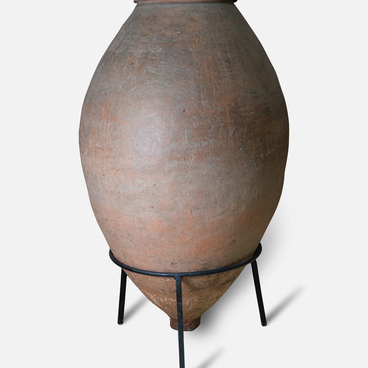In the first centuries CE, part of the Black Sea coast fell under the control of the Roman Empire, including due to the Mithridatic Wars, which were fought between Rome and the Kingdom of Pontus. The Romans constructed fortresses and established temporary military camps at strategically significant locations. Roman writers noted that the soldiers visited healing springs near the Baga military fortification, located in the vicinity of Cape Heraclius and the Aheunta River, for health purposes. The fact that there used to be legionnaires in the territory of the City of Sochi is also confirmed by a number of interesting archaeological finds.
The museum’s archaeological collection features rare items from antiquity and the Middle Ages. One of the remarkable exhibits of the collection is a highly artistic bronze Italian amphora 47 centimeters high. Researchers date this item to the 1st century CE. This is a vessel with an egg-shaped body and one handle made in the form of a stem decorated with images of acanthus leaves, as well as a relief image of the head of Medusa Gorgon. The second handle has not survived. The bronze vessel itself is in satisfactory state of preservation; it consists of two large fragments, and some parts are missing. This type of amphoras dates to the period from the 1st to the beginning of the 2nd century CE.
The amphora was discovered by accident and presumably came from destroyed burial complexes located in the Adler district of the city of Sochi. This exhibit indicates the existence of trade contacts between local tribes, indicated as “Sanigi” in the sources, and the Roman provinces. Soviet archaeologists found similar items of Italic import on the Lower Don. Researchers have established that similar bronze vessels were used by the inhabitants of the ancient Roman city of Pompeii, destroyed during the eruption of Mount Vesuvius in 79 CE. A similar amphora is exhibited at the Metropolitan Museum of Art in New York. The amphora was transferred to the museum in 2002.


